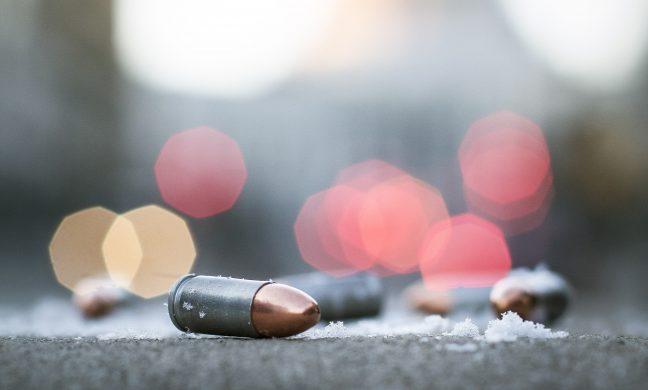Two special agents from the Department of Justice fired at Quadren Wilson Feb. 3, who sustained five shots in the back. Three weeks later, protesters and community members are still increasingly frustrated with the lack of transparency surrounding the investigation.
In a statement released Feb. 21, Dane County Executive Joe Parisi expressed his frustrations with the silence on the side of the police.
“This has not been a transparent process,” Parisi said. “Many questions about this case remain unanswered, such as what happened and why — why such a massive law enforcement presence and such an apparently violent arrest.”
There were 21 officers on the scene the morning police shot Wilson, including 13 Division of Criminal Investigation agents, three federal Drug Enforcement Administration agents, three Madison Police Department officers, one Wisconsin State Patrol trooper and one Wisconsin Department of Natural Resources warden, according to Tone Madison.
To try to understand the lack of information available to the public from the police, The Badger Herald contacted criminal justice expert and clinical associate professor at the University of Wisconsin Kenneth Streit.
According to Streit, the police may be withholding information in order to better understand how to handle the situation themselves.
“Regarding Mr. Wilson, given the number of law enforcement persons and agencies involved and the method of stopping Wilson’s vehicle, it is an extraordinary event,” Streit said. “My guess is that there was significant confidential information and surveillance invested and that the delays in informing the public are somewhat due to trying to figure out how to proceed.”
As of right now, there is no evidence to indicate Wilson was armed. According to prior reporting by The Herald, the Dane County Sheriff’s Office has not located any evidence to support the notion Quadren Wilson was armed at the time the DCI agents shot him.
Wilson had his hands up and was complying with the officers on the scene, according to Wilson’s attorney Steve Eisenberg. In an interview with Tone Madison, Eisenberg described the incident.
“His hands went up and then he was shot,” Eisenberg said.
Jessica Williams, a domestic violence advocate with Freedom Inc., expressed her frustration and doubt regarding this incident.
Williams referenced the previous shooting of Tony Robinson, a 19 year old from Madison who was killed in his house by Madison police in 2015. Williams made it clear the tragedy of this occurrence was magnified by the fact the Madison community seen so many stories like it.
“It’s really sad that it happened, but it’s not unusual at this point,” Williams said. “We have another Black man who was treated like a threat while he was unarmed, and shot in the back.”
The demand for more information about the events of that morning is clear and apparent, but there is no body camera footage. At the time of the shooting, the camera was facing away from the incident, according to NBC 15.
A proposal to dedicate $83,000 to fund the use of 48 body-worn cameras on police in the North District of Madison was set to be discussed before Wilson was shot, but the Madison City Council pushed it back until April 17.
The proposal was pushed back for a number of reasons, with one reason cited by Alderperson Patrick Heck as lack of funding. The council’s cost estimates included using the overtime budget for the MPD to fund some of the pilot program.
Because overtime budgets are for emergencies and unexpected expenses, some council members were hesitant to discuss the issue at that time, Heck said.
While it is still unclear how city council will decide to act regarding this proposal, the $83,000 budgeted for it pales in comparison to the reported $1 million in added funding to the police department in 2022 alone.
Moreover, the city council recently passed a resolution for accepting a federal grant worth $750,000 that would increase the MPD’s police-force, and Heck is one of the 13 alders who voted to accept the grant. The city would have to pay $600,000 each year for some years to fund the newly-hired police officers’ salaries.
According to a comprehensive review of body-worn cameras in 2019, researchers did not observe statistically significant effects of body-worn cameras on most police-citizen interactions. Researchers are still unclear about the extent to which body-worn cameras influence policing outcomes and suggest exploring their impact as a tool for police reform.
Though it is not a perfect solution, Streit believes body-worn cameras could counter the inconsistencies of witness testimony and, in this instance, would potentially hold the answers to many of the questions that people like Sarisi and Williams have been asking.
“My research leads me to fully endorse the use of body cameras,” Streit said. “I think the presence of the cameras would lead to more accurate fact-finding regarding what actually is taking place during encounters — a time when both parties may later have a difficult time remembering.”
On the other hand, Williams said Freedom Inc. is against the implementation of body cameras for the MPD.
Williams expressed concerns that body cameras could be maliciously used to “target and surveil” Black individuals more than before. Williams also said, even with video footage of police officers attacking Black people, they often don’t lead to any justice for the victims.
“Even when there has been footage, the outcome hasn’t been any different,” Williams said. “I don’t think that, since police officers nationwide have started to wear body-worn cameras, that the rates of police murders of black people have decreased, you know?”


